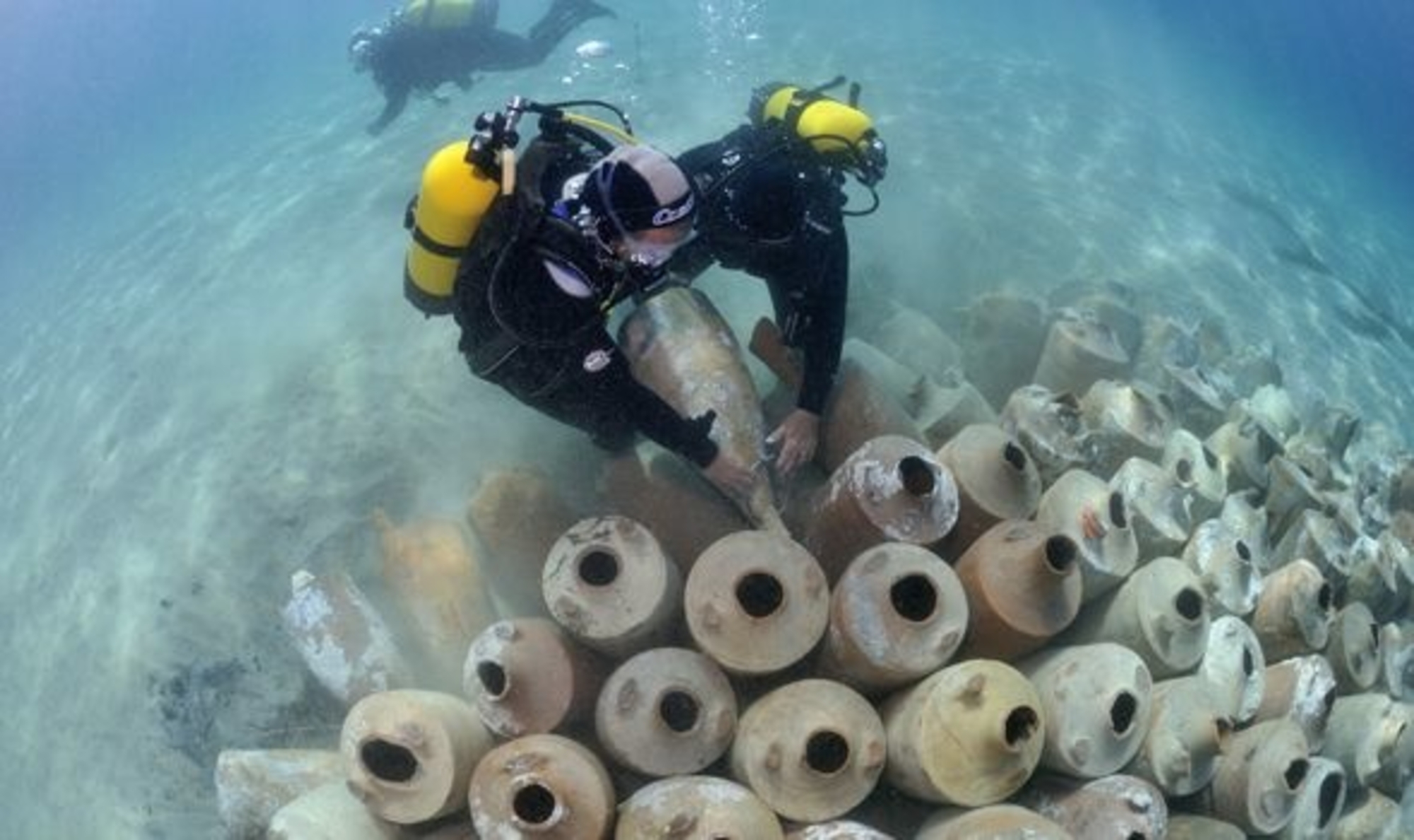
- Home
- A great scientific adventure
- Once upon a time
- Madrague de Giens, an Archaeology Fieldschool
A nondescript pile of amphorae lying in eighteen metres of water to the west of the Giens Archipelago would become a reference site for underwater archaeology, as much for its artefacts of scientific interest as for the methods employed to excavate it.
An impressive cargo
From the day it was discovered in 1967, the wreck was vulnerable to looting. André Tchernia scheduled two dives which reported the presence of a large archaeological deposit under the meadows of Neptune grass (posidonia oceanica). Excavations brought to light 6,000 Roman wine amphorae of type Dressel 1B loaded in staggered rows. These amphorae featured a very large number of stamps, impressed into the baked clay, which indicated that they were dispatched from the Plain of Fondi in the region of Lazio, south of Rome. Analysis of their contents revealed the presence of red wine, sometimes flavoured with bay leaves to please the Gauls, the cargo’s intended recipients.
1972-1982: The first exhaustive scientific excavation
The team (initially trained on the Planier 3 wreck) undertook a detailed analysis of the hull, which was 40 m long with a 9 m beam. Sunk some time between 75 and 60 BC, the boat resembled to an astonishing degree a vessel depicted on a third-century mosaic found in thermae at Thémétra, near Sousse in Tunisia. It was perhaps a myriophoroi, a large vessel of 450–500 tonnes displacement capable of carrying 10,000 amphorae.
" It is true to say that, in France, scientific underwater archaeology served its apprenticeship on the Planier 3 wreck. After that, Giens was its demonstration. In fact, I managed to achieve my goal of showing that we could undertake a large excavation as rigorously as most terrestrial ones, if not more so. " André Tchernia.


